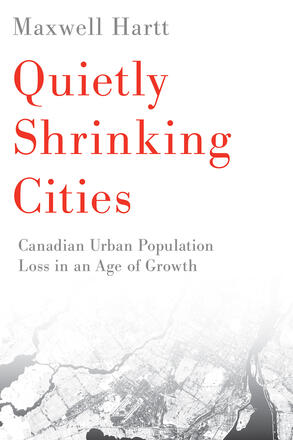
Quietly Shrinking Cities
Canadian Urban Population Loss in an Age of Growth
La description
At 5 percent, Canada’s population growth was the highest of all G7 countries when the most recent census was taken. But only a handful of large cities drove that growth, attracting human and monetary capital from across the country and leaving myriad social, economic, and environmental challenges behind. Quietly Shrinking Cities investigates this trend and the practical challenges associated with population loss in smaller urban centres. Maxwell Hartt meticulously demonstrates that shrinking cities need to rethink their planning and development strategies in response to a new demographic reality, questioning whether population loss and prosperity are indeed mutually exclusive.
Reviews
Hartt shines a light on a phenomenon that many of us urban and housing nerds don't think about often.
- Frances Bula
[Quietly Shrinking Cities] presents a meticulous study of why people leave a city or have fewer children, causing the population to decline.
- Murtaza Haider and Stephen Moranis
Hartt presents a careful view of the current state of urban growth and suggests some possible outcomes for the future.
- S. A. Syme
Hartt explores the broad outlines of the [shrinking cities] phenomenon and searches for some of its causes, which include deindustrialization, globalization, and the rise of the tertiary economy in major centres. On the whole this is a well-written, companionable study.
- John Douglas Belshaw, Thompson Rivers University
Hartt ranges across the wide scope of key indicators from immigration to environmentalism. This is an interesting read for anyone concerned with the fate of our urban places.
- Alan Hallsworth